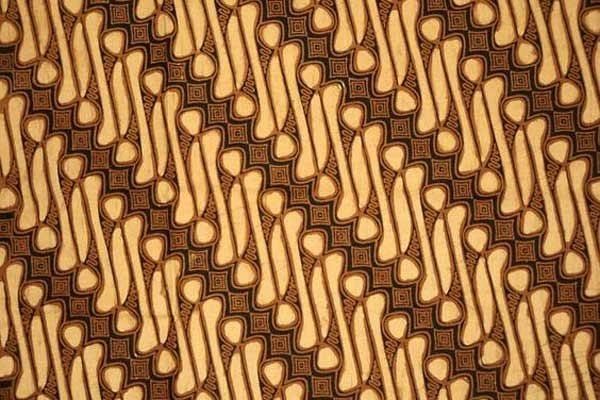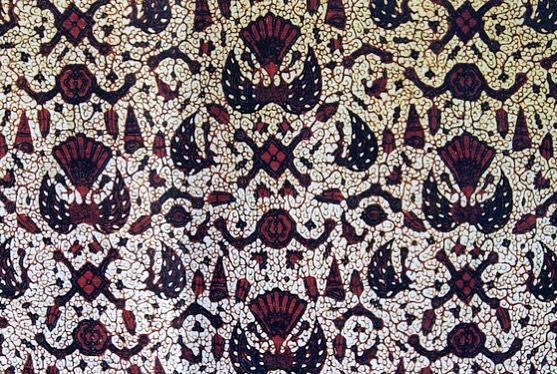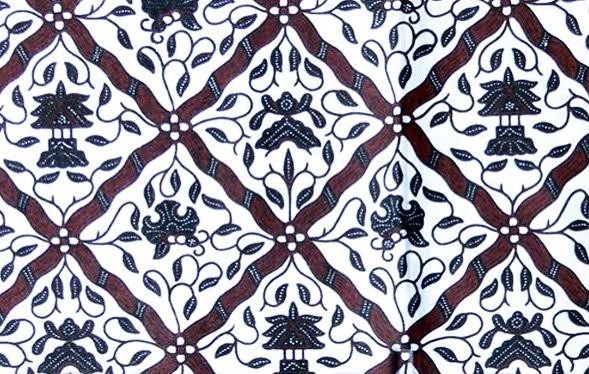Batik is the art of drawing on fabric, which was originally used for clothing. (Rianty’s Store Batik)
Throughout Indonesian history, thousands of batik motifs are created in different regions. These motifs are created with philosophy and meaning. Certain motifs have specific meanings and are intended to be worn for different occasions and ceremonies. Meanwhile, other motifs are reserved for the royal court.
The art of making batik is one of the ancient king’s family cultures in Indonesia. Commonly seen on fabric or cloth, batik patterns have eventually been incorporated into handicrafts like handmade purses, coin bags, and even wooden bracelets!
If perceived through etymology, the word batik is derived from two Javanese words – “amba” (which means broad) and “matik” (which means the making of dots). Therefore, batik is a textile that uses canting, wax, and dye to create dots arranged in stunning patterns and designs.
In the past, batik patterns symbolized social status, with some patterns only permitted for use by aristocrats or royal families. Until now, this tradition still exists in several palaces in Indonesia, including those in Yogyakarta and Solo.
Batik Patterns and Motifs
To get to know more about batik, you need to understand the various batik patterns that exist and their philosophical meanings. Let’s check this out!
Batik Parang

The Batik Parang is one of the widely used classic batik patterns. Shaped like waves, this pattern signifies struggles in life, which resembles the sea waves hitting a reef. People who use this motif are expected to continue to fight and never give up in the face of life’s challenges.
Batik Parang has six types of patterns, namely: Parang Rusak, Parang Barong, Parang Kusumo, Parang Kecil, Parang Slobog, and Parang Klitik. These patterns have their peculiarities – especially the Parang Barong pattern, which can only be used by the royal family.
Batik Sekar Jagad

In addition to the Batik Parang, the Sekar Jagad is also typically used by the royal communities. Batik Parang pattern comes from the city of Solo and Yogyakarta. The word Sekar Jagad supposedly comes from the words “Kar” (meaning “map” in Dutch) and “Jagad” (meaning “world” in Javanese). So, this motif pattern symbolizes cultural diversity in Indonesia and around the world.
Batik Mega Mendung

This batik pattern originated from the city of Cirebon. The Mega Mendung has seven color gradations that symbolize the seven layers in the sky, and its shape resembles clouds. Although the meaning is a dark cloud, this pattern does not mean sadness. Rather, this type of batik means patience, not being emotional or calm, and being careful in solving problems.
Batik Sidomukti

The main characteristic of this batik is the coloring process that uses natural ingredients like soybean. But what makes the soga or brown color in batik Sidomukti interesting is that it is the original and ancient classic batik color. You will often see Batik Sidomukti at important Javanese traditional events such as weddings or inaugurations, especially in Yogyakarta and the Solo region.
As its name implies, Sidomukti comes from the word “sido” (which means “to be,” “become,” or “to continue”) and “mukti” (meaning “noble and prosperous”). Thus, using this batik Sidomukti is a symbol of prayer and hope that people who wear it will get continuous glory and prosperity.
Batik Sidoluhur

This batik pattern is close to Sidomukti. The Indonesian Sidoluhur pattern is generally used by the bride on the wedding night. The word “sido” in Javanese means to be or to become, while “mukti” means honor and dignity.
Using the Batik Sidoluhur pattern in a wedding ceremony is a form of prayer and hope for the bride that she will always be healthy and become a person of honor and dignity.
Batik Kawung

Batik Kawung is one of the oldest patterns of batik in Indonesia. Shaped like neatly arranged sugar palm fruit, this batik motif symbolizes humans who always remember their origins. Additionally, the Kawung pattern signifies one’s ability to control lust and maintain balance in behavior, courage, and justice. As such, many leaders used this batik pattern in ancient times..
Batik Truntum

For romanticists, the Batik Truntum is a great choice. Batik Truntum has a deep meaning because it symbolizes the love that grows back. Mainly focused on floral patterns, this type of batik means that to keep love growing, it must be constantly tended to (much like watered flowers) to prevent withering over time.
Batik is a traditional art with a special meaning behind each type of pattern. To this very day, Indonesians commemorate this iconic heritage every year on Batik Day on October 2nd. The event marks a celebration of the beauty of batik, its origins, and the communities that have been crafting these patterns for ages.
So, are you enticed to collect some beautiful batik?
